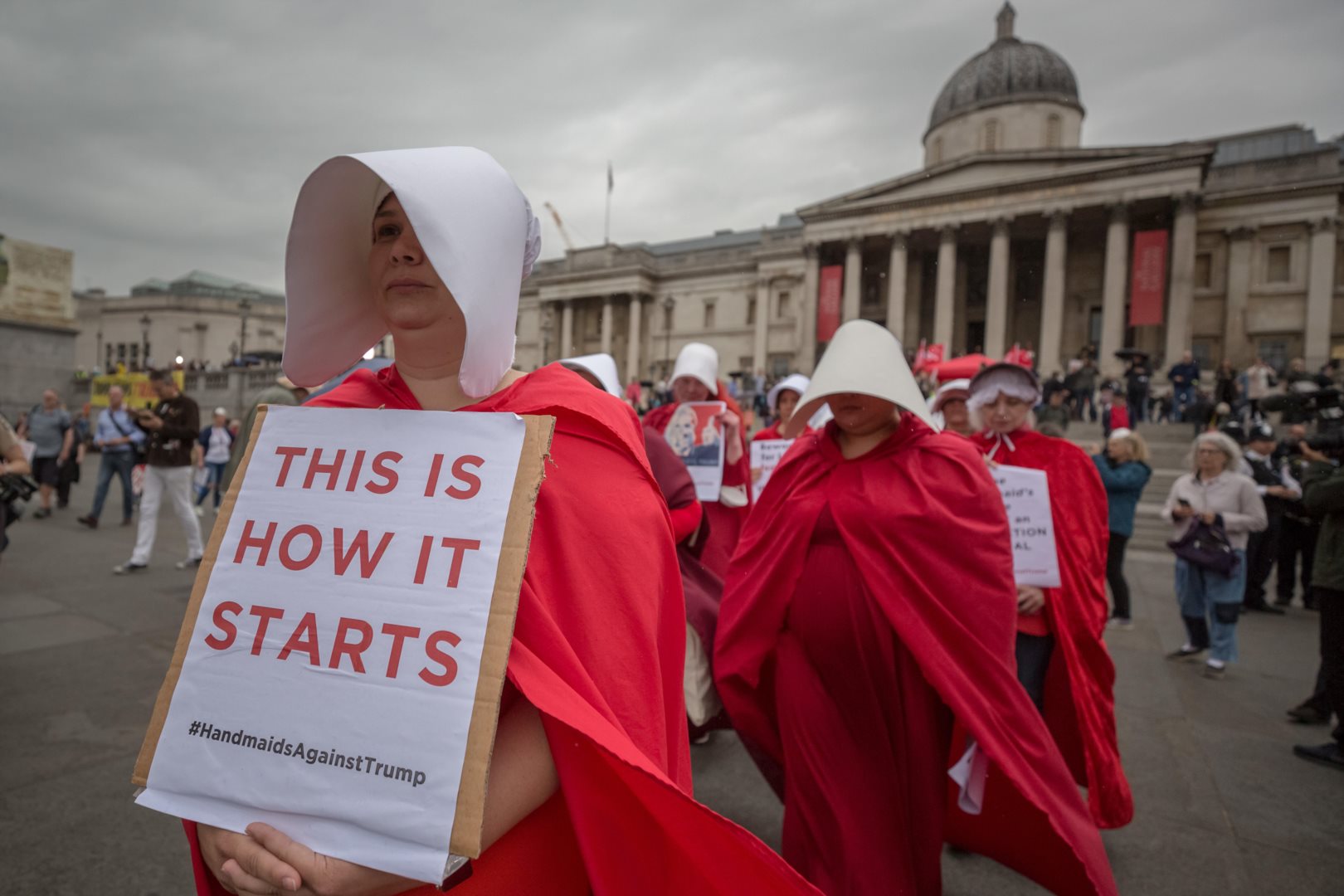Books
Margaret Atwood Wrote a Great Novel. Unfortunately, Her Fans Turned It Into a Cult
Atwood’s innovation is to give this dystopian nightmare the distinctly female framing of domestic and sexual enslavement—as experienced by “Offred,” a “Handmaid” assigned to a man named Fred and his wife for surrogate motherhood via monthly copulation.

Among the notable cultural events of the last decade, one must count the emergence of the Handmaid’s Tale franchise: the hit television series loosely based on the 1985 dystopian novel by Canadian writer Margaret Atwood, the novel’s return to bestsellerdom as a trade paperback, and The Testaments, Atwood’s 2019 sequel, which won the Booker Prize and has topped the New York Times best-seller list, where it is currently in its 16th week and in fifth place. It is a phenomenon that has made Atwood, who turned 80 last November, not only a celebrity but a cultural icon: “Queen Margaret,” as The Atlantic recently dubbed her. She was the subject of a recent 7,000-word interview in New York magazine, as well as one of Glamour magazine’s “Women of the Year” for 2019.
There is a certain irony in Atwood’s cultural queenship. The significance of The Handmaid’s Tale is not primarily artistic but political: Set in a speculative world where the United States has been taken over by an oppressive, hideously misogynistic regime, it is seen as a warning that women’s rights are in perpetual peril—and, more recently, as a terrifyingly “prescient” commentary on America in the age of Donald Trump. “Sentences that she wrote in the 1980s bloom, chillingly, in 2019,” feminist pundit Rebecca Traister declared while introducing Atwood at a belated birthday celebration at the New York Public Library in December.
Atwood herself has backed such a reading. And yet she has long shown an ambivalence about being cast as a “feminist writer”: One senses that her heroine in the 1988 novel Cat’s Eye, an artist, speaks for the author when she responds to a question about being called a “feminist painter” with, “I hate party lines. I hate ghettos.” Atwood has still eschewed the label in some recent interviews. Even at the feminism-heavy New York event, she voiced misgivings about feminist inclinations to deny or condone female wrongdoing. (Recalling a reader who professed to identify with the sociopathic Zenia from Atwood’s 1993 novel The Robber Bride “because women are tired of being good all the time,” Atwood commented tartly, “I think you have to be careful about that.”)





